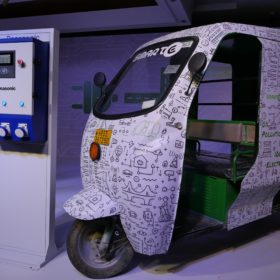FAME II subsidy scheme extended by two years

The second phase of the Faster Adoption and Manufacturing of (Hybrid) and Electric Vehicles (FAME) subsidy scheme to promote electric mobility in India will now run until March 31, 2024.
The Indian government has extended the second phase of the Faster Adoption and Manufacturing of (Hybrid) and Electric Vehicles (FAME) subsidy scheme until March 31, 2024. The scheme was earlier scheduled to run until April 2022.
The FAME II program was implemented from April 1, 2019 and provided an outlay of Rs 10,000 crore (US$ 1.3 billion) over a period of three years to drive electric mobility in India. It aims to drive 10 lakh electric two-wheelers, 5 lakh electric three-wheelers, 55,000 four-wheelers, and 7,000 buses as well as establishing 2,700 charging stations such that one is available every three square kilometers.
As of September 2020, the FAME II program had incentivized 5,595 electric buses at a cost of around Rs2,800 crore. Further, it authorized Rs500 crore to fund 2,636 electric vehicle (EV) charging stations in 62 cities across 24 state and union territories.
Among some latest amendments issued to the Scheme, the government has announced that demand aggregation will be the key method for bringing the upfront cost of 3W EV at an affordable level and at par with ICE 3-wheelers. EESL will aggregate the demand for 3 lakh electric 3-wheelers for multiple user segments. For electric buses, 4-million-plus cities (Mumbai, Delhi, Bangalore, Hyderabad, Ahmedabad, Chennai, Kolkata, Surat, and Pune) will be targeted. EESL will aggregate demand in these nine cities for remaining e-buses under the Scheme on an OPEX basis.
Further, the incentives limit for electric 2-wheelers has been increased to 40% of the vehicle cost.

